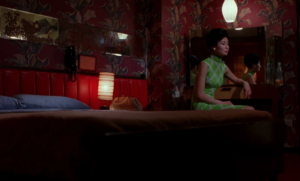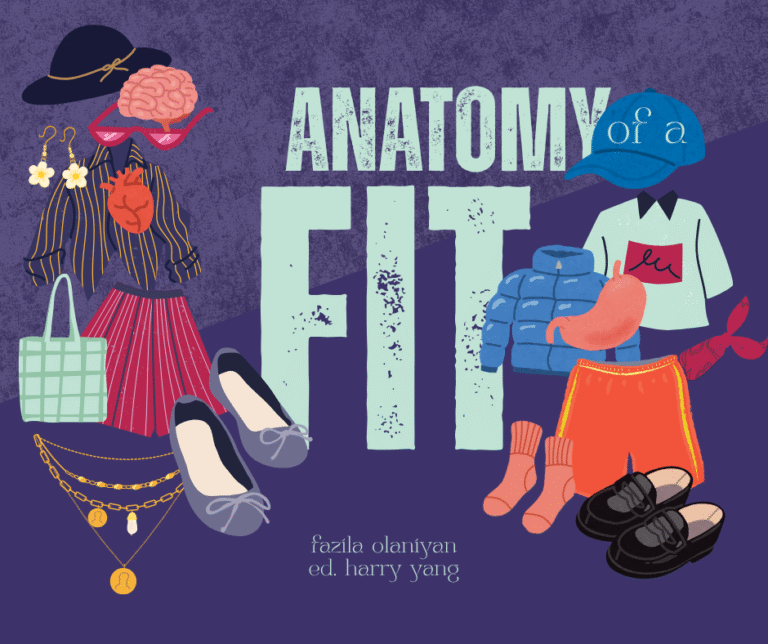
by RACHAEL HANLY
This week’s rec: The works of Frida Kahlo (1907-1954)
Medium: Oil painting

“They thought I was a Surrealist, but I wasn’t. I never painted dreams. I painted my own reality.”
– Frida Kahlo
Frida Kahlo was a Mexican artist born in 1907 whose death in 1954 preceded her recognition as one of Mexico’s most notable artists. Though she was regarded for her political views and unique, unapologetic surrealist style, Kahlo’s life was marred by great suffering- chronic pain, alcoholism, infidelity, physical disability and mental illness were experiences often reflected in her art. It’s easy, when simply observing, to separate an artist’s creation from their personal context, but an examination of Kahlo’s life and works serves as a reminder that behind any revolutionary piece of art is a real person who existed and felt things just as we do.

As a child, Kahlo suffered from polio which she eventually overcame, but this illness left her right leg much thinner than her left. She had always been passionate about art, but did not seriously consider it as a profession. As a young adult, she attended university with dreams of becoming a doctor, exhibiting a strong sense of Mexican nationalism and heavily inspired by Marxist ideology.
However, her ambitions were crushed in 1925, when a horrific bus accident impaled an iron rod through her pelvis, displacing three vertebrae and leaving her in a full-body cast for three months. It was during this time that she rediscovered a passion for art- knowing that her dream of becoming a doctor would never come to fruition, she considered a career as a medical illustrator in an attempt to combine her two passions. Art soon became a medium of expression, and, left alone with her thoughts, she would often paint her most familiar subject- herself.
Her style is bold and candid despite Surrealist influences, with her early art displaying Renaissance undertones- this would later evolve and adopt more of a Mexican folk art feel in an attempt by Kahlo to produce art for her own people that rejected the notion of Western superiority. Notable is her abandonment of traditional ideals of perfection and beauty, giving rise to the infamous monobrow-and-moustache combination that was so characteristic of her self portraits.

Kahlo’s life was further complicated by her tumultuous marriage to fellow artist Diego Rivera in 1929- infidelity plagued the relationship, Kahlo engaging in affairs with the likes of entertainer Josephine Baker and Russian revolutionary Leon Trotsky, Rivera with Kahlo’s own sister, among many other women. Kahlo’s inability to successfully carry through a pregnancy due to her injuries was a major source of grief- her painting, Henry Ford Hospital, mourns one of the three miscarriages she suffered. The heartbreak is striking- symbols of a fetus, pelvic bone and uterus-like orchid surround a haemorrhaging Kahlo, seemingly connected by umbilical cords.

Kahlo’s health continued to decline throughout the 1940s, and following the death of her father she sank into depression. Her paintings during this time would continue to reflect the pain she felt and multiple surgeries she underwent- notable is her 1944 painting The Broken Column, in which Kahlo, encased in a brace, depicts her spine as a crumbling column, staring martyr-like at the viewer with nails embedded in her body.

- The Broken Column (1944)
Mystery surrounds Kahlo’s death- bedridden by 1954 due to numerous surgical complications, the official cause of death was a pulmonary embolism, though many suspect suicide. We do know that the last entry written in her journal simply stated, “I joyfully await the exit- and I hope never to return- Frida.”
It is hard in everyday life to see how medicine is really connected to art. But through an examination of Frida Kahlo’s life and the way in which she expressed her passions, illness and political ideologies, we can hopefully gain an appreciation of different expressions of suffering, and through this become medical practitioners with understanding, intelligence and heart.

- The Wounded Deer (1946)














































































































